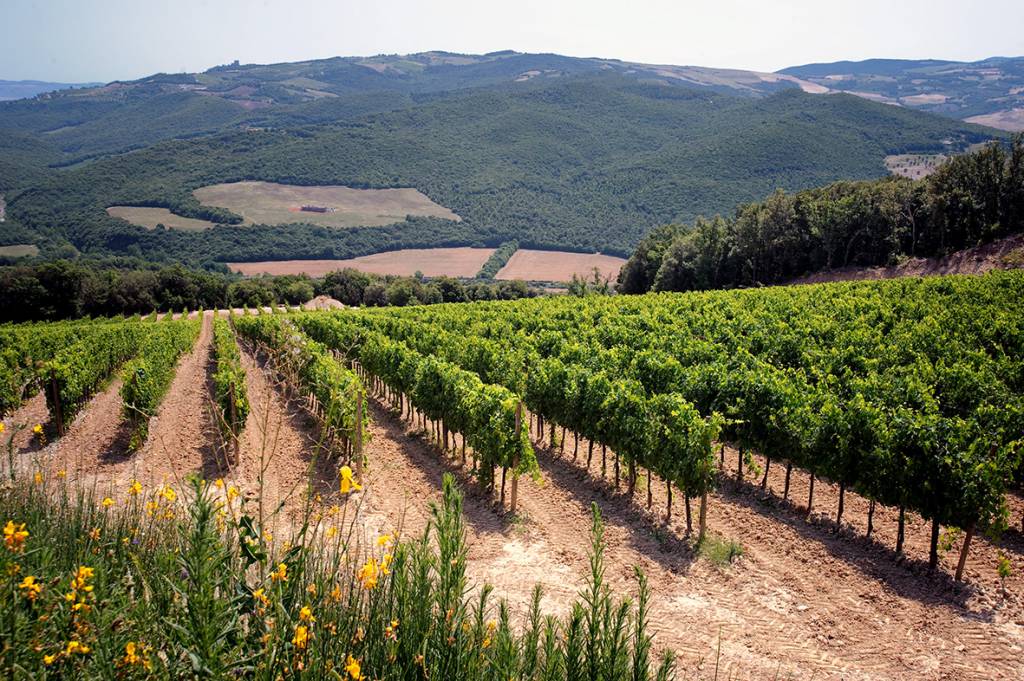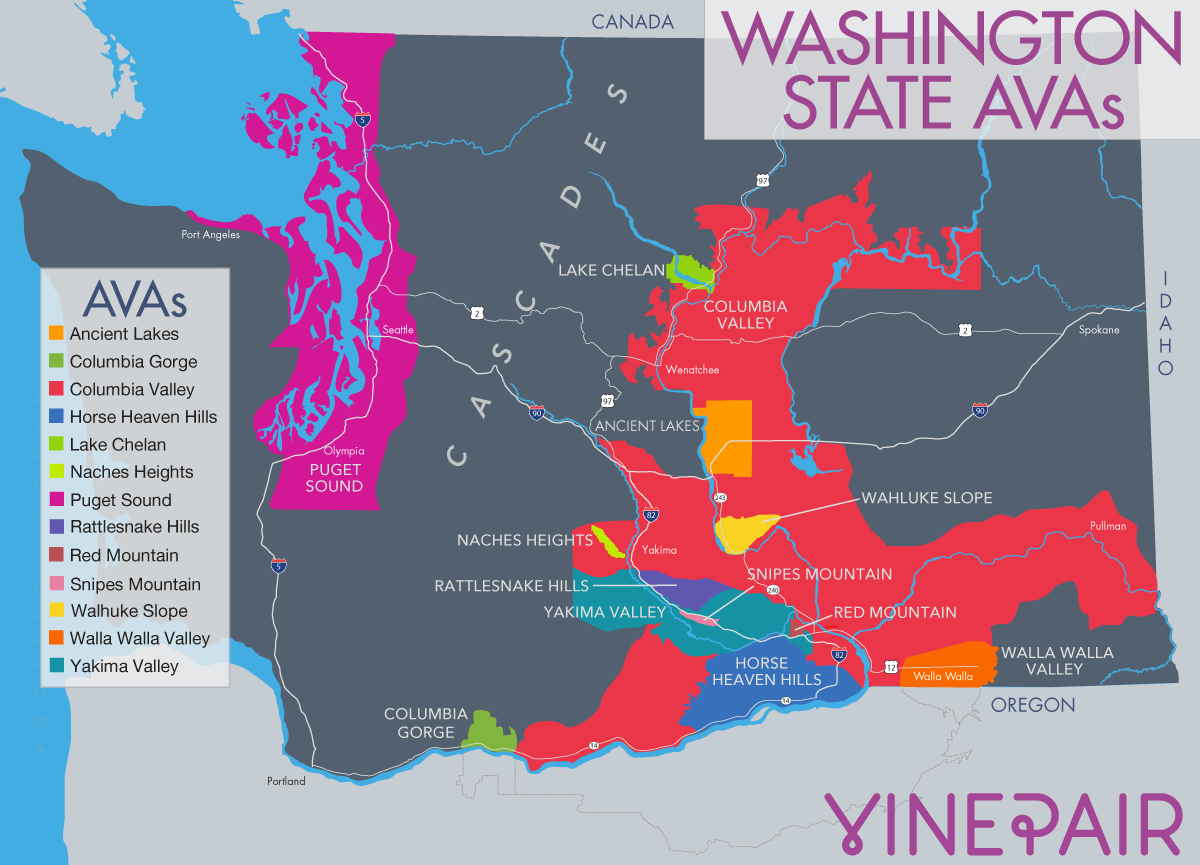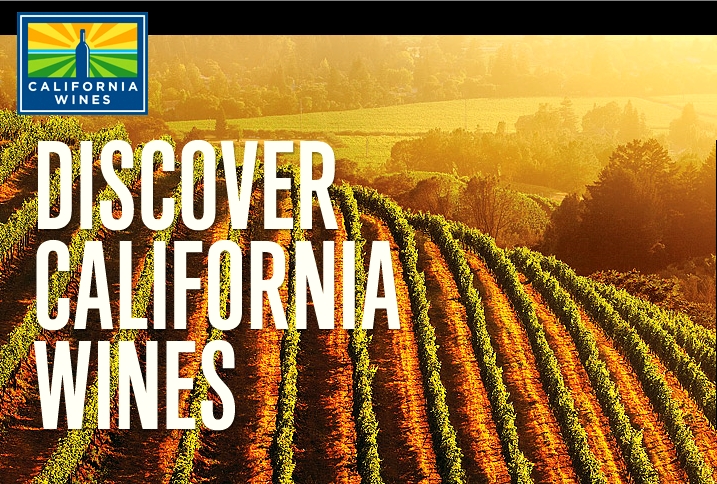
Austrailia, Home to the World's Deadliest Animals and Good Wine
I have been to Australia once. It was over a year ago, and I was preparing to leave for 10 fun filled days away from home on business. I had just explained to both of my boys that I was going to be getting on a plane, and flying to a country called Australia. I continued telling them that Australia was half way around the world, and that as a result, I would be gone for 10 days. This was the longest I had ever left either of them. I could see the sadness in their faces as I started to pack. In the background we were watching a program about sharks on the discovery channel. The program ended, and the next program comes on. Before I could realize what was happening, the announcer comes on with his best announcer voice and says, "Australia, home to the most deadly animals on the planet." He then went on to talk about snakes, crocs, spiders, sharks, and other animals that could kill any man that crosses their path. Needless to say, my oldest, who understood what the man said got very concerned and began to cry. I told him that I would only be in Melbourne, which was a big city like Chicago, and that I assure him that I would not be seeing ANY of the deadly animals that the man spoke of. I think 10 days later when I came home, he finally believed me.
As I mentioned, I was in Melbourne, and I did have one day to play, so I had scheduled a trip to the Yarra Valley (seen in Victoria in orange above). It was a beautiful countryside filled with beautiful vineyards. I drank some amazing wines while I was there. Makers such as Yarra Yerring, Oakridge, Jamsheed, Timo Mayer, and Mac Forbes to name a few. The wines I had from Australia prior to tasting in Melbourne, were largely jammy Shiraz offerings exploding with fruit. I did drink some of that, and enjoyed them, but what struck me was the diversity of wine in the Yarra Valley. I found Bordeaux blends, Cabernet, Shiraz, but most notably at Mac Forbes we tasted some of the better Pinot Noir I had ever had. These wines were single vineyard offerings from 5 different sites each screaming the story of the earth they were planted in. We also tried several versions of his Rieslings all made at differing levels of sweetness. At the time, when I had tasted Riesling in the past, I had found it to be cloyingly sweet. This was my first interaction with a balanced dry Riesling, and a beautiful off dry Riesling that was balanced by acidity cutting through the sweetness as well. The trip opened my eyes in many ways to wine. As I covered before in this blog, that trip was also the reason that I decided to go and get certified as a Somm, and also was the reason I became inspired to try making wine on my own. (By the way, I just took possession of my third barrel for wine making this afternoon)

A brief history of wine in Australia starts with the beginning of the continent as a British Colony in 1788. On a boat, carrying a bunch of prisoners, along with soldiers and those seeking a fresh start, Captain Arthur Philip landed in Australia bringing with him cuttings of vines from South Africa. Fortunately, the vine grew well in this new land, and while the quality was not there, the new colonists made wine and carried clippings of new vines as they discovered uncharted land within the continent.
Shortly after, there was a gold rush. In the 1870s as people were striking it rich discovering gold, they were also building a large appetite for wine. As the Gold dried up, so too did the thirst for wine. To make matters worse, shortly after, two things tore a gaping hole in Australia's growing wine industry. The first was economic recession, which slowed demand and put strain on the newly growing industry, and the second and potentially more devastating was Phylloxera. This should sound awfully familiar as it is almost the exact same story through much of the new world wine regions. Fortunately, Australian officials acted quickly, and confined the Phylloxera to Victoria. At the time, Victoria was the leading producer of Australian wines. The louse devastated the vines in the state, but fortunately spared the rest of the country. As a result, Australia boasts some of the oldest vines in the world. Also as a result, the wine capital of Australia shifted from Victoria to South Australia where it remains to this day.
The focus in the early days was on sweet dessert wines. Not much of a surprise since the British at the time liked themselves a good Port, or a lovely Sherry. (Pip Pip) The focus on the "Stickys", as they call sweet wines continued until recently. Australia still makes some sweet aparatif type wines, but it is less than 1 percent of total production today.
Wine Australia is the governing body for wine in Australia today and has set up GIs (Geographical Indications) This is a relatively new phenomenon in Australia starting only in 1981. When listed as a varietal, wines must contain at least 85% of the grapes listed on the label. If they list a region, again 85% of the grapes must come from that region, and if they list a vintage, they must also follow the 85% rule. They must list all grapes in a blend that make up 85% of the blend. Grapes must be listed in the order of their concentration in the wine. So if you have a Cabernet (60%) and Shiraz (40%) blend it must be listed in that order. Also, you may not mention a grape that is only 4% of the blend if you don't list one that is 8%. Other than that, there are not a lot of rules, and Australian Winemakers are free to create. On the other hand, they are still learning what the terroir of Australia is capable of producing.
You will note when you look at the map above, that all of the wine producing regions of Australia are located in the south. This allows for cooler climate, and a tempering of the temperature by the ocean. There are 7 states within the country. They are West Australia, North Australia, Queensland, New South Wales, Victoria, South Australia, and the island of Tasmania. You will note that the Northern Territory and Queensland have no wine regions, and that Western Australia's wine producing regions hug its southern coast.

Starting with the largest producer of wines in Australia, we start our journey in South Australia, which confusingly is not the Southern most part of the country. Both Tasmania and Victoria are located further South, so on a test, don't miss that!! As you would guess in an area that produces so much wine, a lot of the wine produced is not of the highest quality, however, there is also some amazing wine from some interesting places in South Australia. We will focus mostly on the GIs producing the highest quality wines. The region is broken up into 5 major GIs with sub regions within them. The first is the Adelaide Super Zone. Within this zone is Barossa (Regions Barossa valley and Eden Valley which also contains the High Eden). Fleurieu (Regions: Currency Creek, Kangaroo Island, Langhorne Creek, McLaren Vale, and Southern Fleurieu), Mount Lofty Ranges (Regions: Adelaide Hills which also has sub regions Lenswood and Picadilly Valley, Adelaide Plains and Clare Valley).
Leaving the Adelaide Superzone there is the far North (Southern Flinders Ranges), The Limestone Coast (Regions: Coonawarra, Mount Benson, Badthaway, Robe, Wrattenbully and Mount Gambier), Lower Murray (Region Riverland) and finally The Peninsulas.
The best from this region come from the Barossa Valley, Eden Valley, McLaren Vale and Clare Valley all of which sit in the Adelaide Superzone. Note that only the Coonawarra Valley gets equal praise, and that sits within the Limestone Coast Zone.
The Barossa has some of the oldest Shiraz and Granache vines in the world. Many also believe that due to the lack of Phylloxera in the area they may have some of the oldest Cabernet vines as well in the Penfolds block 42 vineyards. This has lead them to set standards for what is considered "Old Vines." Old vines must be 35 years or older, Survivor vines at least 70 years or older, and Centerian vines must be at least 100 years or older. The oldest demarcation are Ansestor vines which are older than 125 years. The Barossa valley is the fourth largest wine region in Australia and the largest fine wine producer. This is Shiraz country with big bruiting examples of the grape. Many of the wines carry high levels of alcohol, frequently in excess of 15%. Top producers include Penfolds, "The Grange", Torbeck's Run Rig and the Laird. Barossa also sees other warm weather varieties and does quite well with them too. Cabernet, Grenache and Mataro produce well and GSM mixes are on the rise.
Eden valley produes mostly whites and the star is Riesling. Dry, sharp and acidic, the wines of the Eden allow Riesling to shine. High Eden produces some of Australia's best versions of Chardonnay.
McLaren Vale (Note "Vail" not Valley) is the most important of the regions in the Fleurieu Zone. It has a warm climate and the wind is a formidable presence. This allows for a decrease in disease, so McLaren Vale has lead the way on organics in Australia. The majority of vineyards planted are dedicated to red grapes. Shiraz is the most heavily planted grape followed by Cab and Grenache. Due to the warmth, again alcohol levels can get up there and be a bit hot.
Clare Valley GI is the most heavily planted region. The interest here lies in the region's diversity. Riesling, Shiraz and Cabernet can all be found and done well in Clare Valley. Jesuits built the first true winery in this region called Sevenhill Cellars, as a source of communion wine. Elevation is the big moderator of temperature in this GI and vineyards are often at high altitude. Shiraz is the workhorse in the region, but Cab, Malbec and Riesling are also of high interest from the Clare Valley. Riesling is particularly interesting form Polish hill which shares soil characteristics with Mosel Valley.
Leaving the Adelaide Super zone and going to the Limestone Coast one finds the Coonawarra GI. This is Cabernet Sauvignon country. Here Cab grows in a soil called Terra Rossa or red earth. It is a clay based soil that allows for good water retention allowing the vines to grow through the dry growing season found in Coonawarra. Cab, Merlot and Shiraz are the leaders in the region making up north of 85% of the grapes grown. Coonawarra is referred to as Australia's "Red wine Centre". The region has gotten its bruises on the international scene for over manipulation of wines in the winery. Or the flip side of that which is not paying enough attention to the growing of the grapes in the vineyards. This can be seen by over acidification, and additions of tannin to the must. This has caused the winemakers to take pause and return to more natural production methods.
New South Wales GI is broken into 8 Zones. Note that these are the regions closest to Sydney, Australia's most populous city. Additionally, it is where wine making in Australia began. The 8 zones are as follows, Big Rivers (Region: Murray Darling, Perricoota, Riverina, Swan Hill), Central Ranges (Regions: Mudgee, Cowra, Orange), Hunter Valley (Regions: Hunter with subs Broke Fordwich, Pokolbin, and Upper Hunter Valley), Northern Rivers (Region: Hastings River), Northern Slopes (Region: New England Australia), South Cost (Regions: Shoalhaven, Southern Highlands) Southern New South Wales (Regions: Canberra District, Trumbarumba (FUN TO SAY), Hilltops, and Gundagai), and finally the Western Plains.
Weather in the region is hot and wet. The Pacific Ocean and the Great Dividing range contribute to the weather patterns of the region. Days are warm, and there is a lot of rainfall particularly in the summer months. As you journey north, the weather gets hotter and dryer. As one goes up the mountains it gets cooler with elevation.
Hunter valley is known for its Semillon. These are dry, age worthy wines, generally low in alcohol and quite high in acid. Tyrel's Vat 1 and Brokenwood's ILR Reserve are among the best examples. Shiraz also shares some of the best vineyard sites, and Chardonnay is planted as well.
In the Central Ranges Zone, Mudgee is the best producer. Although it borders Hunter, it is dryer and less humid Hunter in part because of its high altitude vineyards. Cabernet and Merlot are the most planted grapes and there are little whites to speak of. What is planted white tends to be Chardonnay. Orange is cooler than Mudgee due to its mountain climate and higher elevations. Grown in Orange is Cabernet, Merlot, Shiraz and Chardonnay but more often we are seeing both Sauvignon Blanc and Pinot Noir. Pinot has a promising future in Orange.
From here we will move on to Victoria. In Victoria there are 6 GIs. Central Victoria ( Regions: Bendigo, Goulburn which has a sub region called Negambie lakes, Heathcote, Strathbogie Ranges and Upper Goulburn), Gippsland, North East Victoria (Regions: Alpine Valleys, Beechworth, Glenrowan, King Valley and Rutherglen), North West Victoria (Regions: Murray Darling and Swan Hill), Port Phillip (Regions: Greelong, Macedon Ranges, Mornington Peninsula, Sunbury and the Yarra Valley) and finally Western Victoria (Regions: Gramplans with sub Great Western, Hentry and Pyrenees).
Grape growing in the region started in the Yarra Valley in 1838. This was not a heavily populated area until people discovered gold in them hills... That same gold, and the wealth found from it also helped to boost the wine industry in the region. In 1877 however, Phylloxera rared its ugly head, and the grapes were decimated in the region. Shortly after, the temperance movement in Australia took out the rest of the industry, and it was not until the 20th century that the Yarra valley rebuilt. As of now there are over 775 wineries in the region, and 21 GIs. The beauty of the region is diversity. You can get wines for all tastes here. From Stickys to sparkling to still whites and reds.
In port Philip, Burgundian varieties rule the roost. The Yarra Valley is the most important region in Victoria today. Mount Mary and Chateau Yarrinya are some of the top producers. Due to its proximity to Melbourne, many international stars have begun investing in the region. Among them are Chandon, which makes sparklers in the Champagne Method. White grapes are more popular in the fields than red. Most popular is Chardonnay, followed by Pinot Noir. Also important are Cabernet which sometimes has difficulty ripening, and Shiraz.
Also notable is Rugherglen which produces fortified wines. They are perhaps most known for their Muscat.
Western Australia is broken into 5 Zones all hugging the ocean. Central Western Australia, Eastern Plains, Inland and North of Western Australia, Greater Perth (Regions: Peel, Perth Hills, Swan district with sub Swan Valley), South West Australia (Regions: Blackwood Valley, Geographe, Great southern with subs Albany, Denmark, Frankland River, Mount Barker and Porongurup, Manjimup, Margaret River and Bemberton) and finally West Australian South East Coastal.
The wine region grew up around the big city of Perth. Margaret River is a coastal region and has the states best appellation. It is one of the best regions in Australia for Chardonnay, Cab Sauv and Sauv Blanc-Semmillon blends in Australia. The Cabernet in this region rival those of Coonawarra.
Tasmania also produces wine that is generally seen in cold climate producing regions. Chardonnay is the best with Sauv Blanc, Pinot Gris, and Riesling showing the best promise. There is sparkling with and pinot noir as well most of which goes towards making sparkling wine.
Good wine is made in Australia, and values are still to be had. The future is bright. For a great read pick up a copy of the book THE FUTURE MAKERS, Australian wines for the 21st century by Max Allen. In it he talks about the regions in detail. There are beautiful pictures of the country, and a run down of the beneficial opportunities in front of wine Australia as well as the risks. Most notably, he lists global warming. Most of the land mass cannot allow for the production of fine wine. It will be a shame if in the coming years, we are not in a place in which Australia can continue to produce fine wine.
























